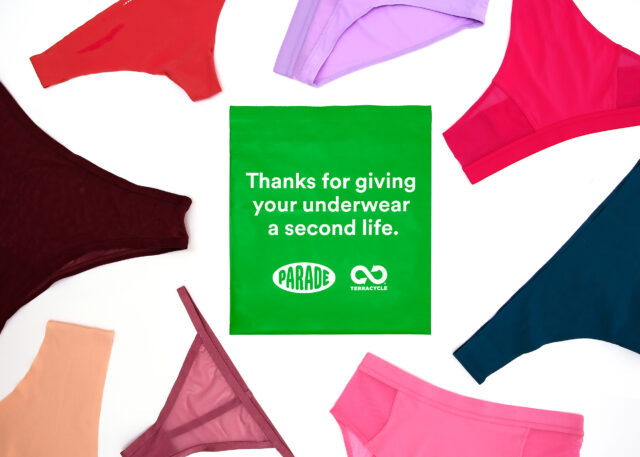It’s easy to repair, resell, or donate old shoes and clothes. But what about old underwear? Most of them go straight in the trash, which ultimately means that around 11 million pounds of underwear end up in a landfill every single day.
This might seem like a minor problem, because undies are small. But at a global scale, this is a big problem, as the industry churns out an estimated 150 billion of pairs of underwear each year. Since a lot of underwear contains synthetic, plastic-based fibers like nylon and polyester, these materials don’t biodegrade, but sit in the landfill for hundreds of years, breaking into tiny fragments call microfibers that end up in our waterways, poisoning animals and humans.

Exactly two years ago, Téllez dropped out of Columbia University to launch Parade at the age of 21. As a Generation Z founder, she believed many legacy brands in the $250 billion lingerie market didn’t meet the needs of the next generation of consumers, from the lack of body inclusivity to the overly sexualized advertising. With Parade, Téllez wanted to address issues that were relevant to her peers.”Underwear is at this high-potential space at the nexus of sex, gender, politics, fashion, and sustainability,” she says.

For Parade’s program, Téllez partnered with TerraCycle, which recycles products that can’t go through curbside recycling programs, from cigarette butts to chips bags. Starting today, consumers will be able to go to Parade’s website to request a shipping label and biodegradable bag, which they can fill with used underwear of any kind, from any brand. The underwear don’t have to be in good condition, but Parade asks that customers wash it before they send it in.
The underwear is then shipped to one of TerraCycle’s Material Recovery Facilities, where it’s sorted by material type and cleaned. It is then mechanically shredded and re-spun into a recycled material called “textile shoddy.” TerraCycle sells this shoddy to companies that use it in products like home insulation, bedding, carpet padding, upholstered furniture, and the insides of vehicles.
TerraCycle sells a Zero Waste Clothing box that people and companies can buy to fill with apparel, including underwear, that will be recycled, but it costs between $123 and $313 depending on the size of the box. But in this case, Parade is bearing the cost of the recycling, so it’s entirely free to the consumers. For Téllez, it was important to make this program available to all consumers, not just Parade customers. “The underwear industry hasn’t spent much time thinking about the end-of-life of a product,” she says. “We wanted to make it as easy and seamless as possible for anybody to responsibly dispose of their underwear.”
As I’ve reported, TerraCycle’s big breakthrough was persuading brands to pay for recycling on consumers’ behalf as part of their sustainability efforts. However, brands often place a cap on how much they’re willing to spend on a particular recycling program. Last year, it faced a lawsuit from an environmental nonprofit for being unclear about these budget constraint. In response, TerraCycle said it would make it clear to consumers if participation in a particular program was limited. In this case, Parade says it hasn’t set any limits on this program and is committed to running it for the long term.
But ultimately, Téllez acknowledges that this recycling program is just an intermediate step in the brand’s sustainability goals. Parade wants to to create a fully circular system where underwear can be recycled back into underwear, meaning that raw materials wouldn’t need to be used for new products.
The broader apparel industry is currently working on fabric-to-fabric recycling solutions. I’ve reported on the Green Machine, a technology developed by the Hong Kong government and supported by H&M, that shreds fabrics and re-spins them into yarn. And last week, I wrote about how Levi’s is now making its 501 jeans with a new material called Circulose that’s made by liquifying old jeans and turning them into viscose polymers. For now, all of these technologies are still in their early stages and will take time to scale.
Téllez is keeping an eye on these new approaches, but until they become widespread, she believes a program like the one with TerraCycle is an important step. “The immediate step is to keep as much underwear as possible out of landfills,” she says.
